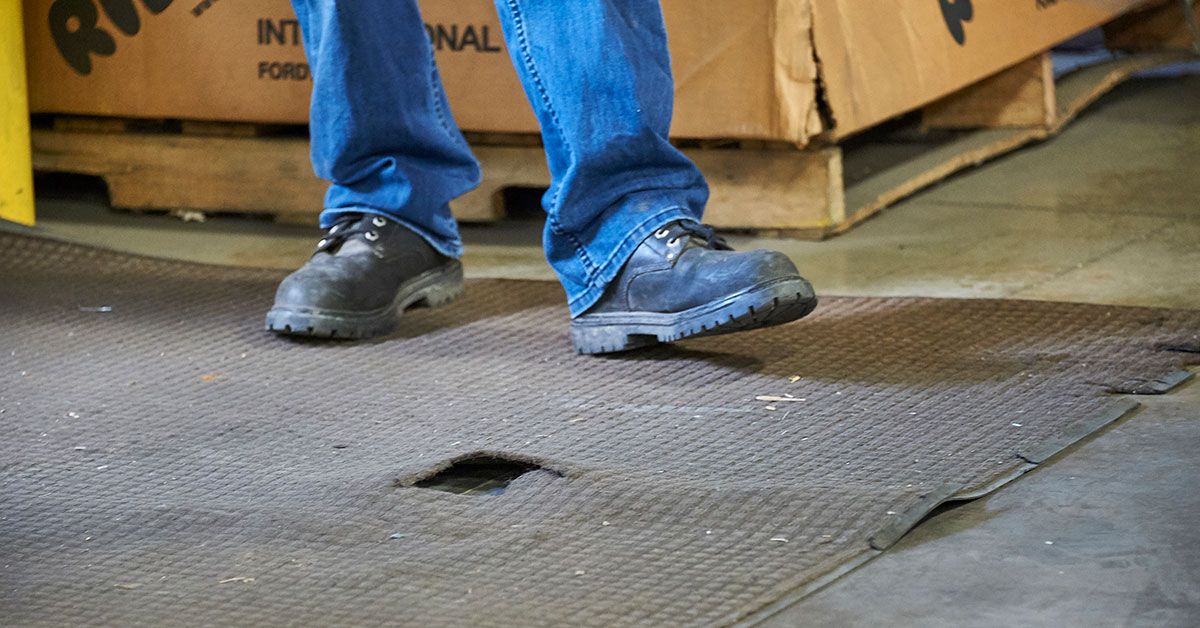To help reduce slips and falls, check the floor material
Date Posted: 06/15/2020

You’ve probably dealt with employees who were injured from slips and falls, and you’ve likely considered options such as more frequent cleaning, posting signs to “Watch Your Step,” or even mandating non-slip footwear. But have you examined the floor to determine if a different material could reduce the hazards?
The hierarchy of effective controls begins with engineering controls, which are physical changes to address the hazard at the source. If those options aren’t feasible, employers move on to less effective measures like administrative and work practice controls (such as cleaning and posters), and finally to personal protective equipment (such as non-slip footwear).
Properly evaluating the potential engineering controls requires understanding the options that are available, and technology has been changing rapidly.
What you have now
Your facility probably uses a number of controls to reduce the risk of slips and falls, even if you haven’t thought about those measures as engineering controls. For example, area rugs by entry doors can help absorb water and remove dirt from footwear, preventing those slipping hazards from spreading further into the workplace.
Your facility might also have stairways with metal grating or other non-slip surfaces, helping to reduce the risk of slips. Office areas likely have carpeting because they offer better traction than smooth or polished floors. In production areas, most employers want smooth floors for a number of reasons. A perfectly smooth floor is easy to clean, but could easily create a slick surface that increases the risk of slips.
Considering alternatives
Smooth flooring requires continual monitoring to keep it clean and dry. When evaluating the costs of alternative flooring, consider the potential savings if the need for cleaning is reduced. For example, if a work crew spends several hours each week cleaning the floor, installing a different type of flooring might allow the crew to gain back time that could be spent doing productive work. The hours saved from maintenance (and gained in productivity) should be factored in to a cost justification for new flooring.
Higher-friction surfaces might not be needed throughout a factory or warehouse, but some locations may benefit from a different floor covering or coating. If you currently recommend or require non-slip footwear, that may be a clue that a change in flooring could help reduce a potential slipping hazard. And as noted, an engineering control is generally more effective than personal protective equipment.
How Safety Management Suite Can Help
Slips, trips, and falls are a leading cause of workplace fatalities, but most fall-related injuries and fatalities are preventable. Prevention efforts could include purchasing the right type of floor covering, and training staff how to clean and maintain the flooring. To learn more about various kinds of floor coverings and how to measure the potential for slipping, join our subscriber exclusive webinar on Walkway Safety, to be presented on June 18, 2020. Log in to register. Don't have a login? Register for a no,obligation trial.
How Safety Management Suite Can Help
E-mail Newsletter
Sign up to receive the weekly EHS Insider email newsletter for safety articles, news headlines, regulatory alerts, industry events, webcasts, and more.